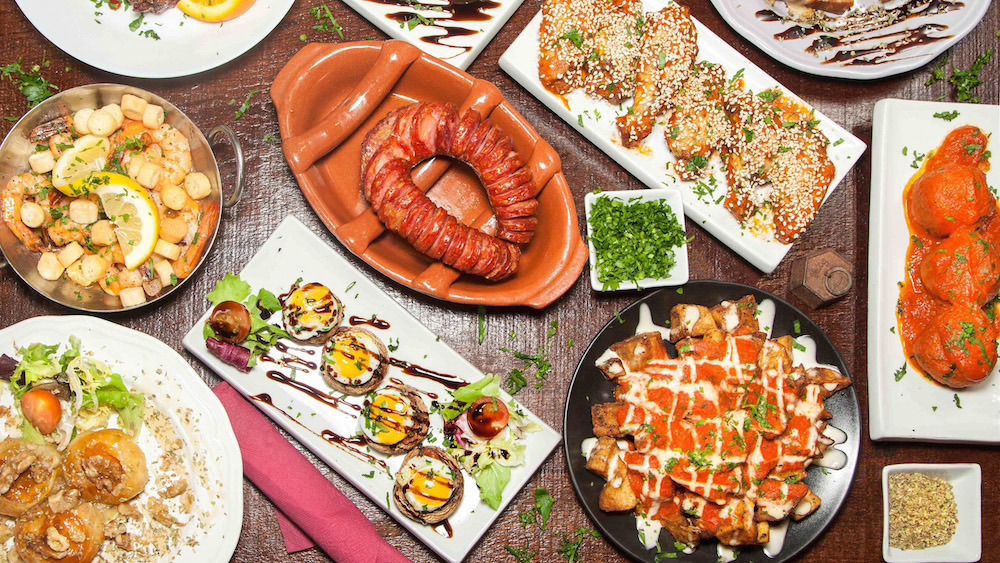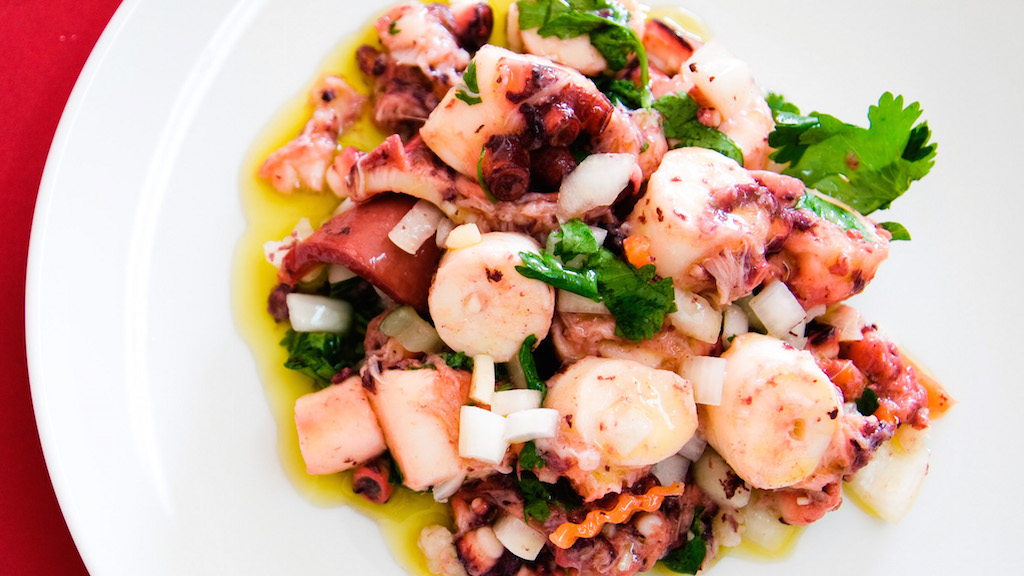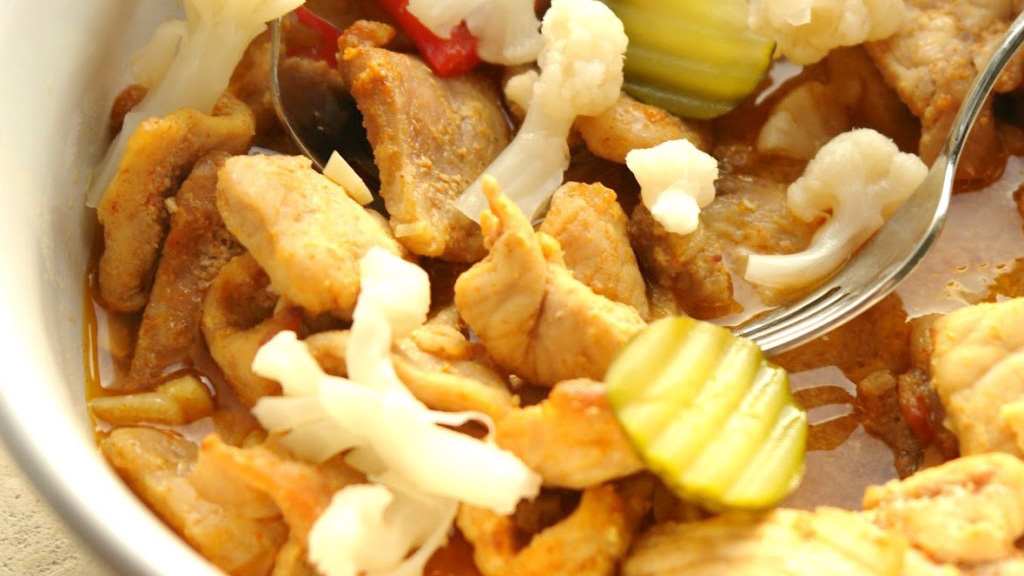Petiscos: the most popular Portuguese tapas

There is no single word to translate petiscos. You may see them appearing in Portuguese restaurant menus as appetizers, snacks or finger foods, but petiscos are so much more than that!
These small servings of Portuguese foods are perfect for sharing, when you go out with friends and crave not only for delicious dishes, but also for meals and conversations that end up extending during several hours around the table. Just like tapas in Spain, petiscos in Portugal are also one of the best ways to get to try several typical recipes in one sitting. Ideally, you’d order several petiscos to sample and share with your friends, while drinking a good Portuguese beer or bottle of wine.
Petiscos are so relevant in the world of Portuguese food culture, that we even have the verb petiscar, that is, to eat petiscos. In fact, more than referring to the fact of eating in itself, petiscar ends up implying going out with friends for food and drinks. It’s the equivalent of hanging out, but when there’s food involved in a rather informal setting. Putting it simply, petiscar is having fun sharing in a pretty delicious way!
The world of Portuguese petiscos is vast and varies regionally or even according to the season of the year. But there are some typical petiscos that tend to make an appearance in Portuguese eateries across the country and even Portuguese restaurants abroad.
Allow us to recommend some of the best petiscos you can try when you travel to Portugal:
Codfish fritters: pastéis de bacalhau and pataniscas

How could we not start a list of recommended petiscos without featuring Portugal’s faithful friend, the much beloved salted cod? There are several main course cod recipes we could suggest, but when it comes to the world of finger foods, cod fritters are a must!
Pastéis de bacalhau, oval shaped cod fritters with mashed potatoes, onions and parsley are a staple all over Portugal, even though in northern areas you are more likely to come across them under the name bolinhos de bacalhau. Either way, they tend to be crisp on the outside, but very smooth on the inside. Salty enough to make your mouth salivate, while balancing the flavor out with the aroma of fresh herbs.
Pataniscas, while also being a cod fritter, are flat patties that instead of being made with potato, consist of a shredded fish, flour and eggs batter. If you want to go old-school, tuck your patanisca inside a bread roll and wash it all down with some house wine.
Octopus salad

Salada de polvo, as it is known in Portuguese, is one of those petiscos which you can order off the menu or that will also sometimes be served to you as couvert, particularly while you wait for your meal to be served at a marisqueira, seafood specialized restaurant, or cervejaria, beer house.
It consists of octopus boiled until very tender, chopped in little chunks, kept company by tiny pieces of fresh vegetables such as onions and peppers. The salad swims in an abundant tangy marinade flavored with olive oil, vinagre, garlic and fresh herbs such as coriander or parsley.
This is the kind of petisco you’d want to have with a glass of chilled white wine. Order it to make your juices start to flow as you wait for your main course, or pair it with a few other petiscos and call it a meal!
Pica-pau

Under the name woodpecker – this is what the name pica-pau literally translates as – this petisco consists of small cuts of meat drenched in gravy. While the meat can feature pork, beef or a mix of both, the sauce will usually be beer based.
Pica-pau tends to be topped with Portuguese style pickles, that is, carrots and cauliflower, as well as a few black olives. Make sure you have some bread to soak up the sauce and wash it all down with a round or two of cold Portuguese beer.
Peixinhos da horta

This is one of the very few typical Portuguese petiscos that is actually vegetarian and represents the perfect excuse for us to share with you the fact that Portuguese people are believed to be behind the invention and diffusion of tempura as a cooking technique!
If you thought tempura was a 100% Japanese thing, read more to understand what its origins are all about. Peixinhos da horta consist of battered and deep fried green beans. So, in other words, green bean tempura. The name of this dish literally translates as little fishes from the vegetable garden, as once deep fried, the beans do resemble crispy fried tiny fish, which is another petisco you can also enjoy in Portugal, particularly in coastal areas.
Gambas à Guilho

You may see this petisco show up in menus under this name, but also as gambas ao alho, gambas ao alhinho, gambas à la guilho or camarões à guilho. In all cases, we’re talking about prawns or shrimp fried in aromatic olive oil. The flavor is extracted from frying plenty of garlic, which is precisely what alho or alhinho refers to.
If you like spicy food, make sure you let your server know about it when you order this petisco, as many cooks will add some red chili into this otherwise fairly simple recipe. If you are into hot flavors, you will indeed appreciate how the kick of spice elevates the dish.
This is yet another petisco best enjoyed with a bread basket nearby. Once you’re done eating the shrimp, we bet you will want to soak up until the last drop of intensely flavored oil with some dough!
Amêijoas à Bulhão Pato, aka, saucy clams

Here is a petisco named after clams, but where the sauce is the star of the show even more so than the sheels. Clams Bulhão Pato style consist of shells cooked in a loose and tart sauce made with white wine, lemon juice, olive oil, garlic and lots of fresh coriander. Order it at most Portuguese restaurants or make it at home following the easy recipe we share here. You can cook this dish with cockles and mussels as well – It is guaranteed it will be delicious!
Moelas

Traditionally, when you slaughter an animal to eat in Portugal, you ought to use every single part of it. In the case of chicken, you’d end up with parts that aren’t always appreciated in mainstream cuisines around the world, such as the gizzards.
These small organs found in the digestive tract of chickens can be cooked until tender, in a rich tomatoey sauce. This gravy is heavily seasoned with red wine, garlic and bay leaf.
Some food-lover travelers may consider this dish a little extreme for their taste, but we truly recommend you put prejudice aside and give it a go. If you think this is easy peasy, you can always keep reading about our suggestions of more bizarre foods in Portugal!
Preserved fish

It may sound a little odd to order canned fish when you go out to eat, but in Portugal this is not only a thing, but a very delicious thing to do!
The world of tinned fish in Portugal goes way beyond the usual canned goods you’d get at a regular supermarket. We have several brands that specialize in high quality preserved fish, and that deliver beautiful products that can be enjoyed along with some bread and wine when you go out to petiscar with your friends.
The most common seafood to be preserved here in Portugal include sardines, mackerel, horse mackerel, cod and tuna from the Azores islands. The flesh can be flavored with olive oil or, for further enhanced and exquisite flavors, with herbs, spices or tomato sauce. Here are 10 delicious things that in Portugal come out of a can.
Regional cheeses and cured meats

When you are a food-lover traveler who visits Southern Europe in general, chances are you look forward to trying regional specialties of cheeses and charcuterie. Portugal, being such a small country, does have an incredible variety of cheese and cured meats.
We listed for you 10 Portuguese cheeses you must try, featuring cow, goat, sheep or a mix of milks. If you will only try one of these cheeses, let Serra da Estrela, a rich sheep milk cheese from the highest mountain in mainland Portugal be it!
When it comes to cured meats, something that goes by the same name can actually mean different shape, flavor or texture depending where in Portugal you happen to be. The main cured meats we recommend for you to try in Portugal are pork based: presunto (cured ham), chouriço (paprika infused cured sausage), morcela (black pudding), farinheira (paprika, lard and flour sausage) and alheira (smoked poultry, lard and bread sausage).
Keep feeding your curiosity on Portuguese food culture and discover more Portuguese sausages you can try in Lisbon!
Flame-grilled chouriço

Portuguese chorizo can be enjoyed simply sliced atop a charcuterie board, used in cooking several of our most traditional and hearty dishes, or also enjoyed as a petisco flame-grilled directly at your table. There is a very Portuguese specific device called a canoe, which is a clay dish meant to support the chouriço to be grilled over alcohol.
This is a spectacle for the senses: while your eyes can marvel seeing how the flame starts charring the edges of the meat, your sense of smell will be enticed as the fat of the sausage heats up and starts dripping, and the aromas of the meat get released.
It is perfectly paired with an Alentejo red wine glass, or bottle to share. Very, very hard to resist!
Snails

This is a seasonal petisco, mostly consumed around Lisbon and the southern areas of Portugal, around summer months.
Caracóis, as we call snails here in Portugal, aren’t half as slimy as one could expect if you’ve never tried them. Once cooked, the chunks of meat are rather small and tender, and end up tasting more of the marinade than of the meat in itself. The sauce used to cook the molluscs is flavored with garlic, tomato and plenty of oregano, resulting in a fresh and aromatic experience.
Ordering a cold beer and a plate of caracóis to be enjoyed outdoors is one of the quintessential Lisbon experiences to be enjoyed during summer!
From all of the petiscos above, which ones make you feel like traveling to Portugal right about now for the sake of eating? Share your cravings with us via Facebook or Instagram and please tag @tasteoflisboa or #tasteoflisboa.
Moreover, we’ll love to see your photo shoots, to know about your insights, questions, suggestions and wishes on your food & culture experiences in Lisbon and Portugal.
Feed your curiosity on Portuguese food culture:
9 Portuguese snacks and wine pairings that will surprise you
10 typical drinks from Portugal
How to identify an authentic Portuguese Tasca
Real people, real food. Come with us to where the locals go.
Signup for our natively curated food & cultural experiences.
Follow us for more at Instagram, Twitter e Youtube
